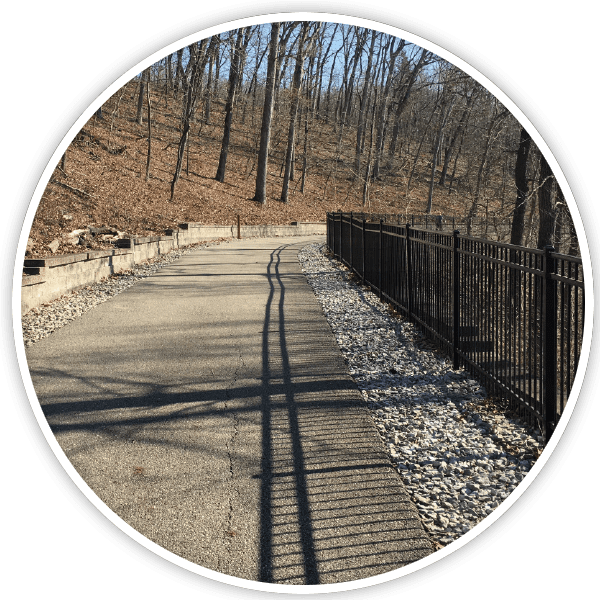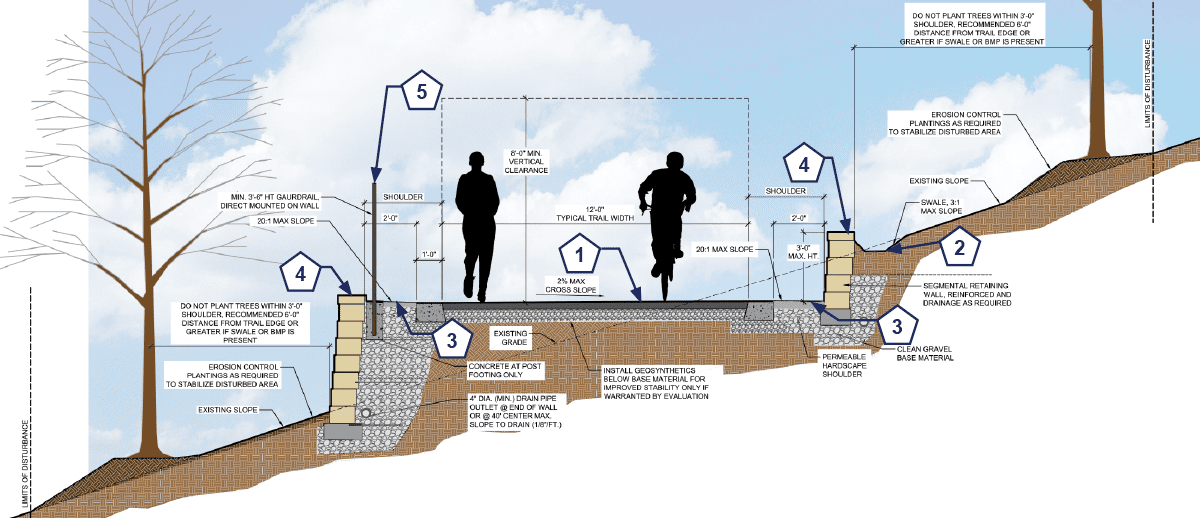This cross section should be utilized in areas of excessive existing slopes.
 While it is always critical to balance cut and fill and site conditions will vary, it is desirable to limit the height of the uphill retaining wall to 3’-0” in height for the best user experience. While a shorter uphill wall is preferable, specific site conditions may require a higher wall of up to 10’-0”.
While it is always critical to balance cut and fill and site conditions will vary, it is desirable to limit the height of the uphill retaining wall to 3’-0” in height for the best user experience. While a shorter uphill wall is preferable, specific site conditions may require a higher wall of up to 10’-0”.
- Retaining walls to address slopes in excess of 8:1 (12.5%).
- Erosion control plantings to stabilize disturbed area.
- Use in areas with severe erosion issues.
- At a minimum, a vegetated swale along uphill side of retaining wall should always be provided.
- Apply paving material (limestone gravel, decorative gravel, or hard surfacing such as pavers or concrete) along shoulder area between concrete curb and wall face on both sides of trail, unless retaining walls are more than 3’-0” away from the edge of pavement.
- Retaining wall at high end of trail to be 3’-0” maximum height.
- Guardrail/ handrail is required where trail is within 6 feet of backside of lower retaining wall, or anywhere where the wall exceeds 2’-0” inches (for added safety for users on bicycle). Guardrail/ handrail may not be placed in turf.
- Strip existing topsoil for reuse in finished grading.
- Limit of disturbance should take into account grading needs. Grading beyond designed limit of disturbance will not be permitted. Also, see Tree Protection.
STANDARD CROSS SECTION

COMPONENTS: Click below for more information on each component.
4) Modular/Concrete Masonry Unit Wall
5) Handrail
